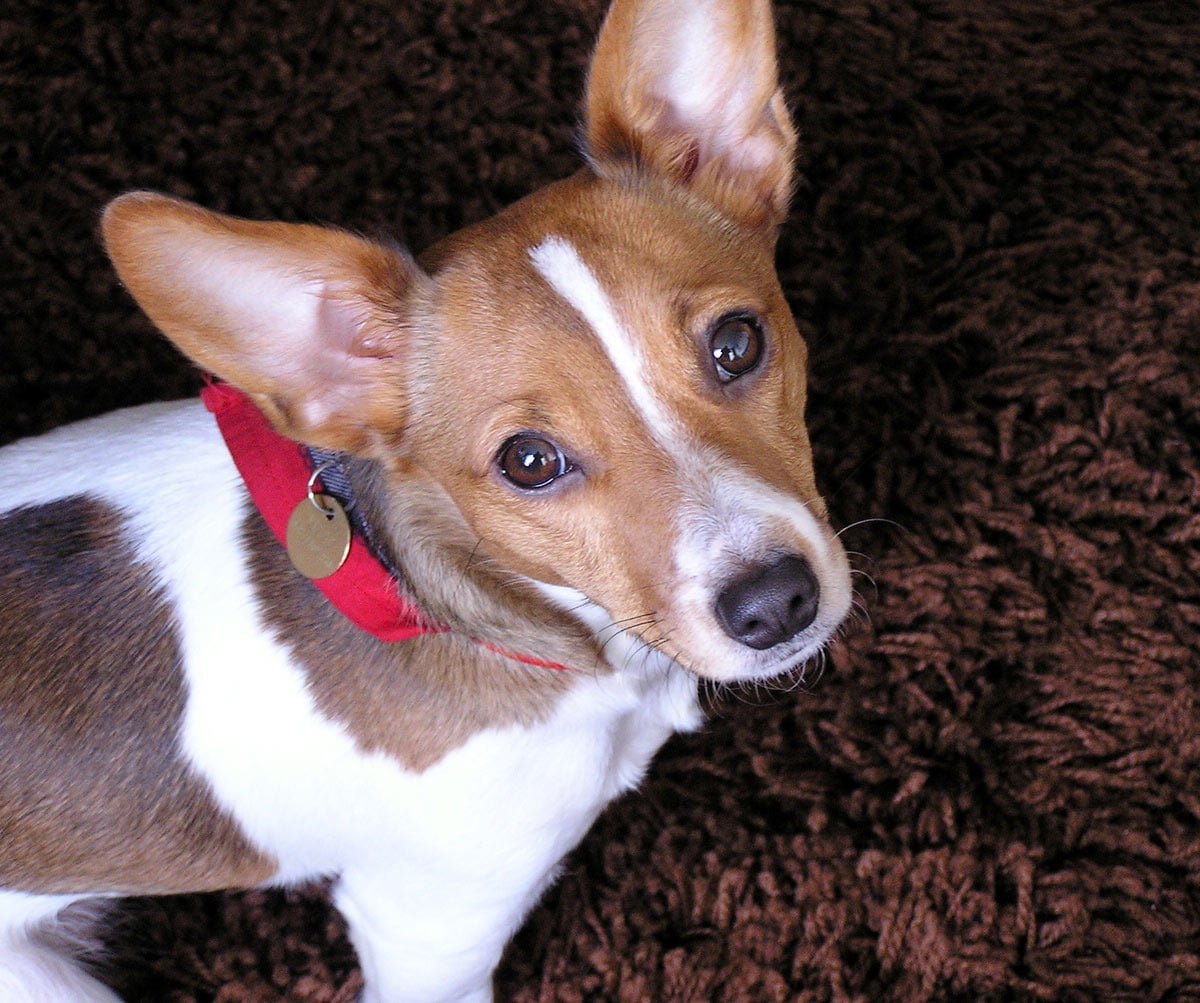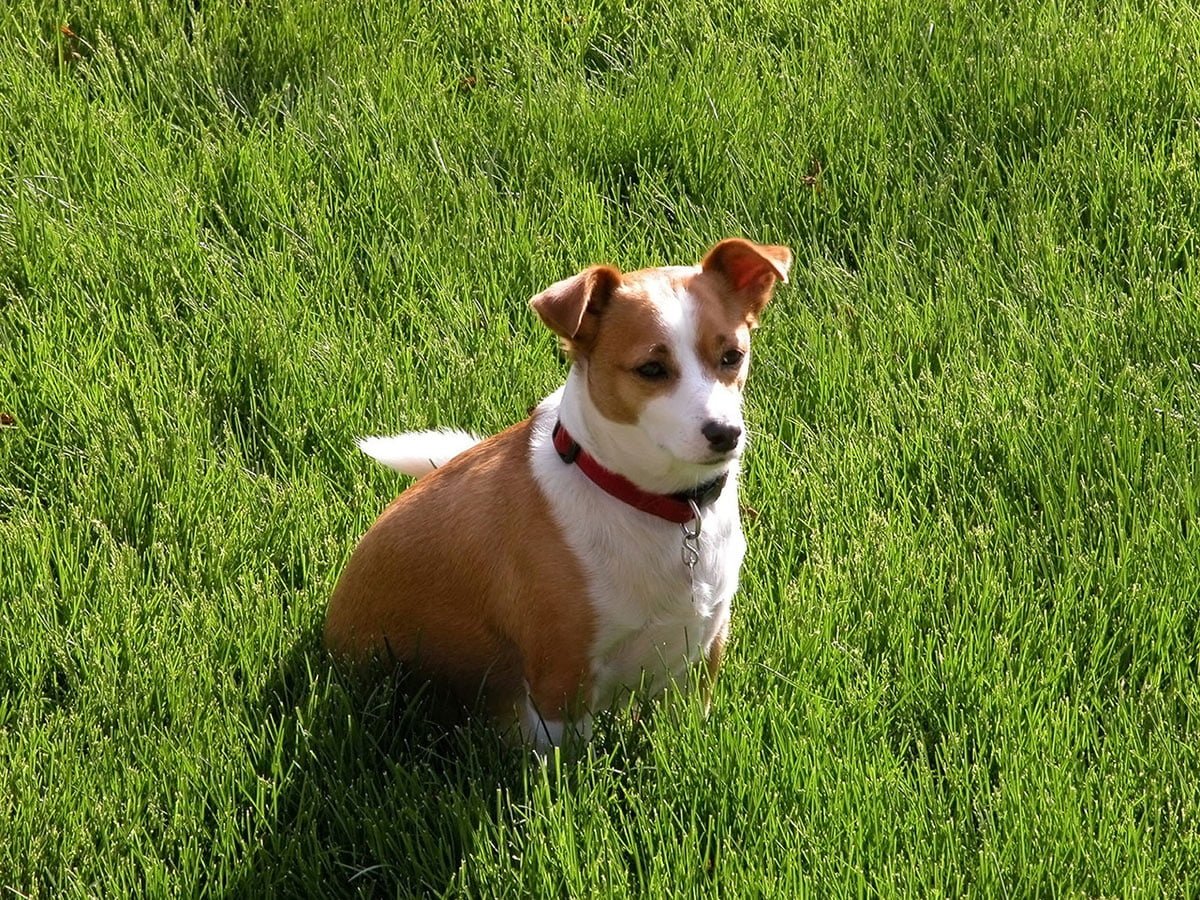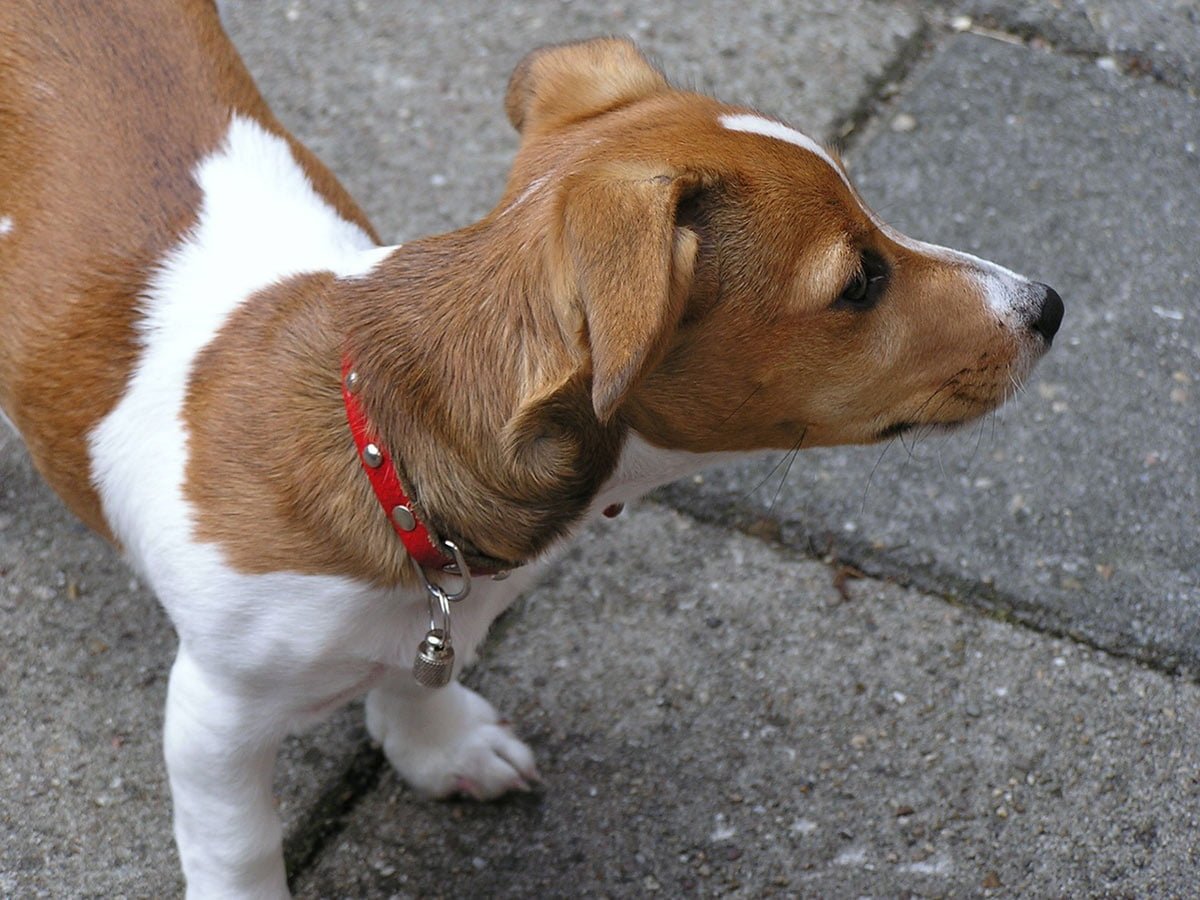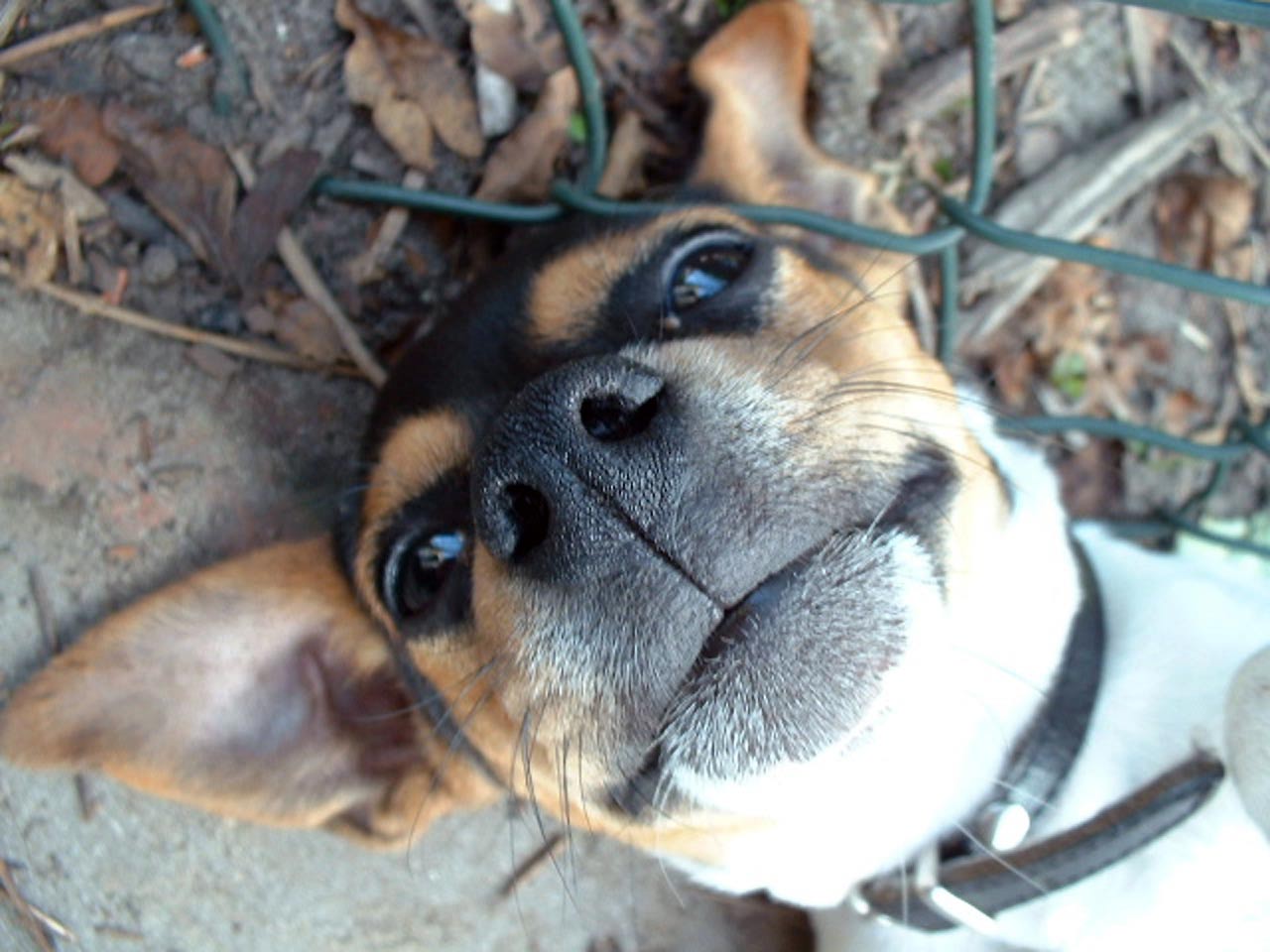
- Home
- Stud Dogs
Some of our most popular Stud Dog Breeds:
- Puppy Litters
- Dog Services
- Dog Breed Profiles
- Blog
- Contact Us
Jack Russell Breed Profile
- Breed Profiles
- Jack Russell
- Jun 11
- Share post

Relatively small in size yet brim-full of energy and attitude, it’s easy to understand why Jack Russells have been dubbed “big dogs in little dogs’ bodies”. Lively, playful and clever, Jack Russells are also very affectionate and loyal, making them excellent family pets.
The high-spirited and wilful Jack Russell is well-known for its fearlessness. This, combined with its tenacity and outgoing nature, can often result in stand-offs with other dogs and, occasionally, with the soft-hearted owner! Given the right training, though, Jack Russells have an almost inexhaustible capacity for learning and can excel at various activities, including hiking and agility.

Typical Jack Russell Facts
Height: 10-12 inches (25-30 cm)
Weight: 13-17 lbs (5.9-7.7 kg)
Average Litter Size: 4-8 puppies
Life Expectancy: the average life expectancy of a Jack Russell is 12 to 14 years, however it is not uncommon for these feisty little dogs to live up to 18 years and beyond.
Good with Children: yes
Kennel Club Classification: Terrier Group
Looking for Jack Russell Stud Dogs?
Colour of a Jack Russell
According to the Kennel Club Classification, the predominant colour of a Jack Russell must be white and they often have black and/or tan markings.

Grooming a Jack Russell
Jack Russells can be either smooth-coated or rough-coated, but both have a dense undercoat. Although both are relatively low-maintenance when it comes to grooming, it is important to brush your Jack Russell each week to keep their coat neat and remove any excess hairs from the undercoat, which can be uncomfortable and result in itching and/or overheating if left.
Although Jack Russells do malt throughout the year, this is more noticeable during spring and autumn when they shed their former coats and develop their summer or winter coats respectively. The rough-coated Jack Russell may require trimming during warmer months to prevent it from becoming too hot. Occasional bathing may be necessary if your Jack Russell develops dandruff; although this shouldn’t take place too often as it can interfere with the natural oils in your Jack’s skin.
Jack Russell Common Ailments/Health Issues
Jack Russells can be prone to allergies, which can be caused by anything from certain chemicals (for instance, in cleaning products), to pollen or even dust mites. While relatively easy to treat, it can sometimes be difficult to work out the source of the allergy and therefore what might be causing the problem. Your vet will be able to provide advice and tips on how to keep your Jack Russell comfortable and happy should it develop an allergy.
Temperament of the Jack Russell
Jack Russells are highly energetic, extremely playful and very intelligent. Loving and faithful, they make great family pets or one-to-one companions, but can consequently suffer from separation anxiety if left alone for long periods of time. Jack Russells are very driven and sometimes display behaviours typical to the breed, such as chasing and digging.

Training a Jack Russell
Given the Jack Russell’s high intelligence level, they are quite easy to train and enjoy the challenge of learning new habits and behaviours. However, owing to their strength of will and sometimes stubborn natures, it is crucial that training should be firm and consistent. You will often find that your Jack Russell responds well to positive motivation (good behaviour should always be rewarded with praise and/or treats!) but that the dog may become resistant if corrected too harshly.
Jack Russells thrive on mental stimulation and it is therefore advisable that training should begin as early as possible. This will also help to prevent your Jack from becoming bored and turning to alternative, more destructive forms of entertainment.
Exercise for a Jack Russell
As lively, intelligent dogs, it’s vital to ensure that your Jack Russell gets at least 60 minutes of exercise each day to keep them happy and prevent them from becoming bored. This might comprise two daily walks (with as much off-the-lead time as possible) and/or energetic games in the garden. Their bouncy, inquisitive natures mean that they love running free and playing active games with their owners, so they make perfect jogging companions and will happily play “fetch” and “find” games for hours. The chase instinct is very strong in a Jack Russell, so you should be vigilant when your Jack is roaming free of any small animals, which might be regarded as prey.
As with most puppies, it is important to socialise your Jack Russell from an early age, exposing him to as many new sights, sounds, smells and experiences as possible so as to encourage it to grow into the outgoing and courageous dog it should be.

History of the Jack Russell
Jack Russells have their origins in the UK where they were initially introduced in the early 19th Century by the hunting enthusiast, Reverend Jack Russell (1795-1883). John Russells were originally bred for their courage, stamina and boldness which combined to make them great hunting dogs with a very high prey drive. A strain of Fox Terrier originating from the Old White English Terrier (now extinct), Jack Russells were historically used to flush prey (such as foxes or rabbits) from their burrows to be pursued by hounds, due to their overwhelming instincts to dig and chase.
Over the years, Jack Russells were transported to Australia where they continued to be bred and developed, although there are now distinct differences in appearance between Jack Russells in Australia and those in the UK. The Jack Russell caused some contention in the USA, where it was recognised separately by the Jack Russell Terrier Club of America and the American Kennel Club. As the name “Jack Russell” had already been trademarked by the former group (which also had far stricter standards with respect to breed classifications), the American Kennel Club changed the name to “Parson Russell Terrier” in 2003.
After World War II, during which there was a notable drop in breed numbers, Jack Russells became far more popular as family pets than as working dogs and they have remained a firm favourite ever since.
The Jack Russell has become increasingly popular in show rings throughout the world following its original popularity in Australia. In 1991, the Jack Russell was officially recognised by the Fédération Cynologique Internationale, and in 2016 was formerly recognised by the Kennel Club, at which time a specific Jack Russell breed standard was established in the UK.
Famous Jack Russell dogs
Artist Francis Barraud depicted his Jack Russell listening intently to an old phonograph in his 1899 painting “His Master’s Voice” – an image used by numerous recording companies and the high street music store HMV.
Jack Russell Stud Dogs

A dog owner since the early 80s, after convincing his parents to buy a Yorkshire terrier named Sadie, Darren created Dream Dogs so dog owners could find the best dog related information on the Internet.
I was loving this article until I got to the “Stud dog” section. Why would you feel this was necessary to add?
I was going to share this to a Russell Rescue Facebook page but obviously have opted out.